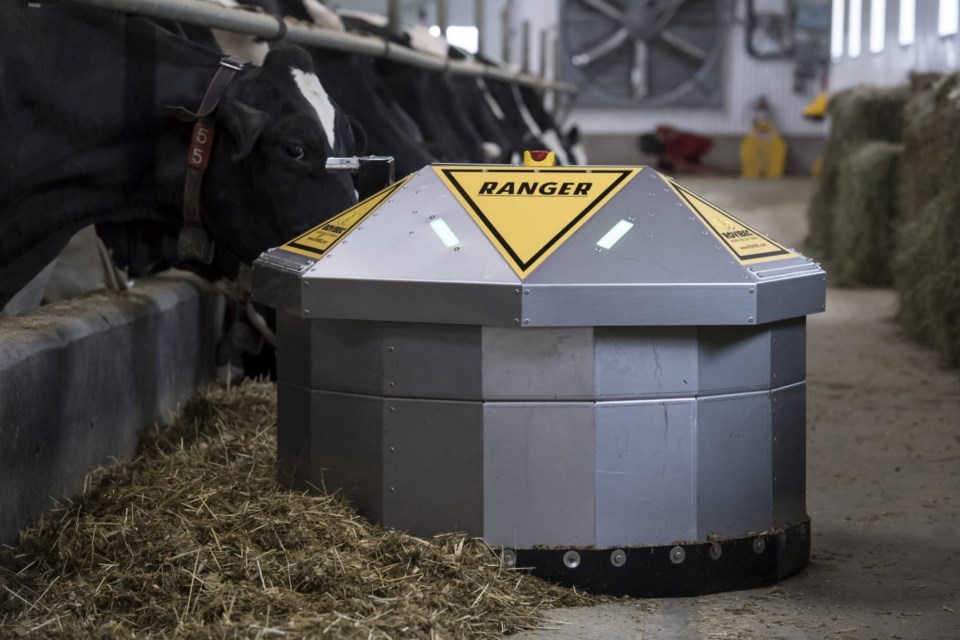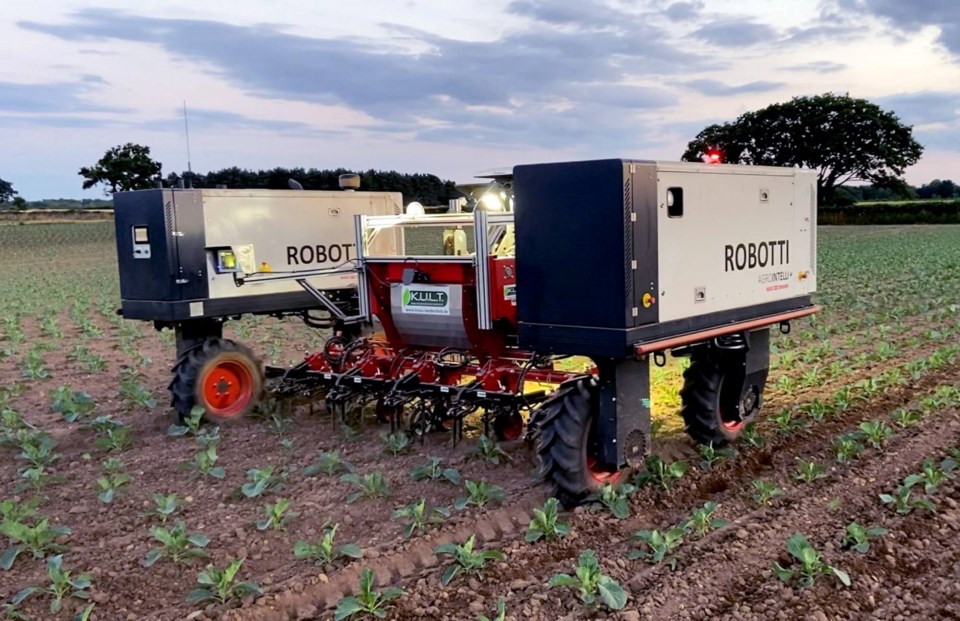Robots have invaded Adrian Struyk’s dairy farm, and he couldn’t be happier.
Struyk runs the 1,250-acre farm, just north of Cochrane, alongside his wife Margaret and two sons, producing milk, haylage, canola, oats and wheat. The family also does custom work on an additional 2,000 acres.
Since they took over the original 450-acre farm in the mid-1990s, the family has grown their land holdings, making several upgrades along the way, adding tile drainage, installing a grain-handling facility, and building a free-stall barn for its young stock.
But, as their enterprise grew, the aging dairy barn, in particular, needed some attention.
“It took a great deal of manual labour and the majority of our family workforce to care for the cows morning and night,” Struyk said during the 2024 Northern Ontario Ag Conference in Sudbury on Feb. 13.
“Our next step was to address these issues, keeping in mind that the future of our family farm was to be in our sons' hands.”
After considering their options, the Struyk family decided to build a robotic dairy barn, which started operating in December 2022.
Want more business news from the North? Sign up for our newsletter.
Among the technologies they’ve adopted are two Lely robotic milkers, which milk cows automatically, monitoring cow activity, rumination, resting time, temperature, and milk quality and quantity.
A Barn-E robot cleans up manure in the barn, Struyk said, keeping walkways cleaner and helping to prevent foot issues in the cattle. It runs 24 hours a day, seven days a week, and will send out an alert if an issue arises.
A Ranger robot, made by Robivec Agrisolutions, autonomously provides feed for the cattle, ensuring they have access at all times.
And the Maximus system — which controls lighting and ventilation in the barn — monitors inside temperatures, the outside temperature, wind speed and direction, and rainfall, adjusting ventilation levels accordingly. Lighting is controlled by time and lux sensors so cows receive a consistent level of light year-round.
The system monitors for heat and stray voltage, and issues an alert if there are any problems.
In a little more than a year since the system came online, Struyk said he’s seen big improvements in his enterprise.
“These management tools are so valuable to the smooth running of a dairy operation,” Struyk said. “It is seen in the improved health, milk production and reproduction.”
Ian McDonald, a field crop specialist with the Ontario Ministry of Agriculture, Food and Rural Affairs, believes the agriculture industry is really just on the cusp of a technology revolution.
Most farmers are already using robots in some respect — smartphones, digital watches, bank machines, computers, automobiles.
But introducing technology directly to the farm can help address labour shortages and improve the quality of life for producers, McDonald said.
He believes on-farm technology could have the same impact that smartphones had when they were introduced to the world, replacing stereo systems, data storage, and phones all with one device that could fit in a pocket.
“In about five years, the entire communication and entertainment industry was completely upended,” McDonald said.
“What happens when this type of disruptive change comes to agriculture?” he said. “Are we ready for it? How will we adapt to it? What is it going to mean?”

McDonald is one of about 150 stakeholders who are part of the Ontario Ag Robotics Working Group, formed in 2021 as a way to brainstorm ideas around technology and how it could impact the sector in Ontario.
Ontario has an opportunity to engage with innovative new companies from around the world that are developing new ag technology, he said.
Part of the goal of the working group is to create an environment where companies can come to Ontario, test out their technology, engage with academics and farmers, and get more of that technology to market.
“The future is really neat. It's somewhat scary, it's expensive, and the face of change is just going to keep going and going,” McDonald said.
“But, my goodness, is it exciting the things that are becoming available to us. Farms are going to change and we're going to have to change with them.”
Testing of some of this new technology is taking place right now by companies like Haggerty AgRobotics, which is based in Bothwell, south of London, in southern Ontario.
Haggerty works with companies from around the globe whose technology is in various stages of commercialization to see if it can be used here at home, explained Jason Gharibo, a project manager with Haggerty.
If the technology works, they help to try and promote it in the sector. If it needs more tweaking, they provide feedback to the manufacturers.
“We really think that (robotics) are going to be a strong tool for the future of crop agriculture and agriculture in general, Gharibo said.
Robots like Oz, made by France's Naïo Technologies, which Gharibo described as “one of the popular machines around the world,” a small, battery-operated robot that can run for about eight hours on one charge.
It works similarly to a tractor in that tools are interchangeable and swapped out as needed. As a smaller machine, it’s useful for managing about 10 acres a day.
Its big brother, Orio, can also use various implements. Gharibo said Haggerty tried it out with a spraying system that enabled them to control how much spray was being applied, while the robot self-navigated around the field.
The Robotti, manufactured by the Danish company AgroIntelli, closely mirrors the versatility of a contemporary tractor, in that existing implements can be added to it.
Gharibo said they used the diesel-powered robot to plant 100 acres of corn and 50 acres of sugar beets, and it handled the task with no problem.
“This robot was one of our favourites, in that we could sit at Tim Hortons and watch it remotely and we could count on it to plant effectively,” Gharibo said.
Lely's Vector robot, as demonstrated in the video below, automates feeding of cattle.
Since the Struyks made their foray into robotic farming, they haven’t looked back, and they’re already planning to add more technology to their operation.
Within the next few months, the family plans to install a Lely Vector robot, which will mix together various recipes for animal feed, deliver the feed to the animals, and monitor feed levels to ensure it’s available to the cows at all times.
Looking ahead, Struyk said they’ll also be installing a Lely Calm calf milk feeder, which will feed calves milk in the correct amounts and at the correct temperature, day and night.
“This will result in healthier, robust calves with optimum growth and development,” Struyk said.
Overall, shifting to robotics at the farm has introduced consistency and flexibility into the operation, he noted.
Though many jobs still need to be completed by people, they are less time-sensitive, he said, and now usually only need one person to do.
“We now have the ability to concentrate and better commit our time to our cropping efforts, whether it be the busyness of planting season in the spring or harvesting in the fall,” he said.
“Robotics and technology has allowed us to continue and to grow as a family farm.”




